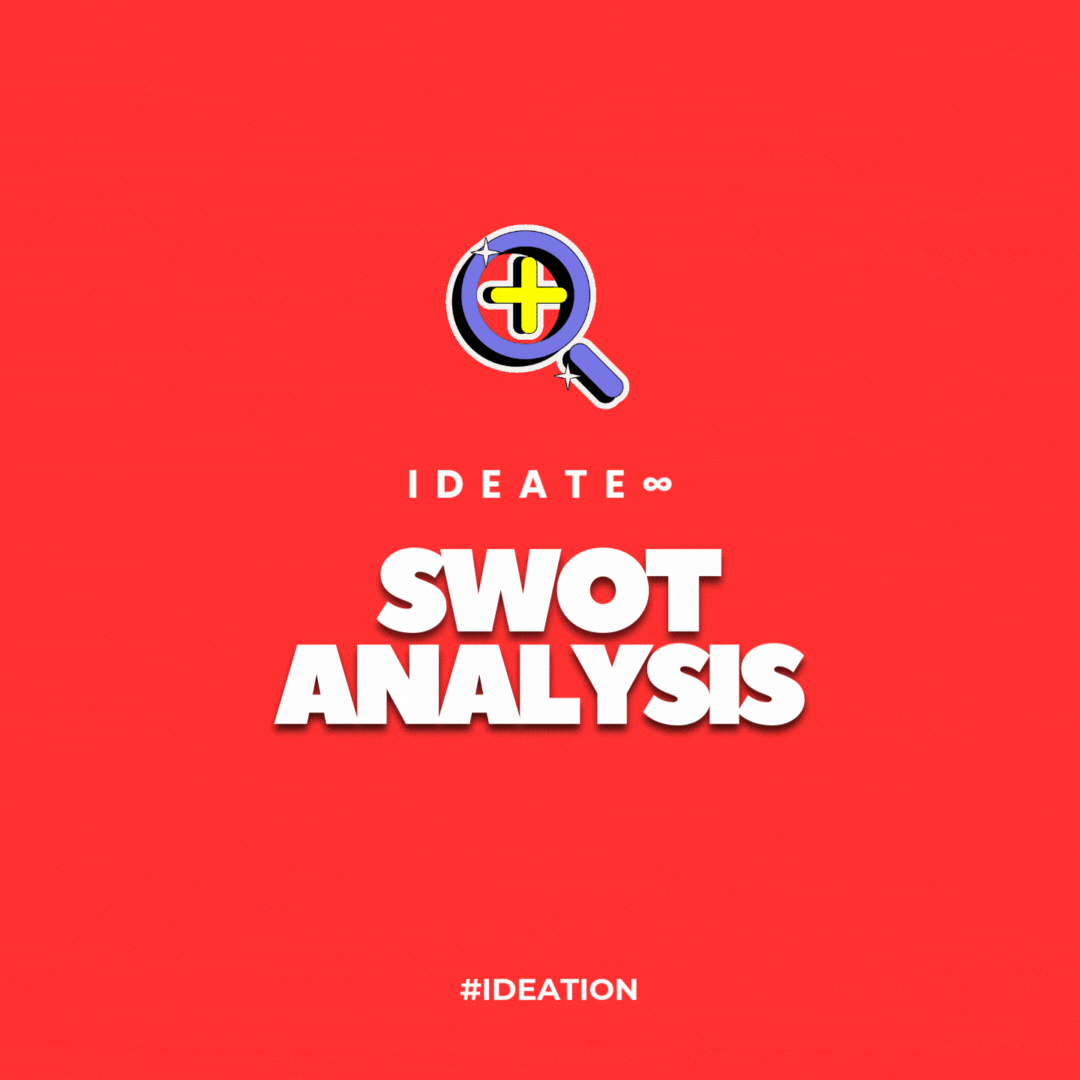SWOT Analysis: A Strategic Anchor in Corporate Innovation Programs
Introduction
In the rush to generate breakthrough ideas, it’s easy to overlook the fundamentals. But every successful corporate innovation program must start by understanding where the organization stands today—its strengths, its vulnerabilities, the shifts on the horizon, and the windows of opportunity it can pursue.
SWOT Analysis remains one of the most trusted, structured frameworks for situational analysis. While sometimes dismissed as basic or outdated, when applied with strategic rigor, it becomes a powerful launchpad for innovation. At Hangar 75, we reframe SWOT within our IDEATE∞ platform to drive clear, opportunity-rich innovation mandates.
Done right, SWOT doesn’t just identify gaps—it defines where your next wave of innovation should focus.
What is SWOT Analysis?
SWOT stands for:
Strengths – Internal capabilities that give you an advantage
Weaknesses – Internal limitations or areas of underperformance
Opportunities – External trends, needs, or shifts you can capitalize on
Threats – External risks that could jeopardize growth or relevance
It’s a strategic diagnostic tool that helps teams assess current realities, align perspectives, and identify high-leverage areas for innovation or reinvention.
When expanded beyond bullet points—using data, cross-functional input, and strategic facilitation—SWOT becomes a launchpad for structured ideation and prioritization.
Why SWOT Still Matters for Corporate Innovators
In complex, siloed organizations, misalignment is one of the biggest killers of innovation. SWOT offers a shared language and framework to unify leadership, product, and strategy teams around where to play—and where to pivot.
It also helps balance ambition with realism. By surfacing internal constraints and external pressures early, SWOT ensures that corporate innovation efforts aren’t built on shaky foundations.
Pros of SWOT Analysis
Universally Understood: Simple and accessible across all functions and seniority levels.
Promotes Alignment: Drives cross-functional conversation about current-state realities.
Strategy-Driven: Links ideation directly to strategic context.
Customizable: Can be adapted for product, business unit, market, or enterprise-level innovation.
Effective for Risk Framing: Especially valuable in regulated or risk-sensitive industries.
Cons of SWOT Analysis
Often Done Superficially: Without depth, SWOTs become laundry lists with little impact.
Can Be Politicized: Internal dynamics may skew inputs to protect certain functions or initiatives.
Static Snapshot: Doesn’t always capture dynamic or fast-moving markets.
Not a Standalone Strategy: Needs to be paired with prioritization and action frameworks to create value.
Illustrative Example: Prioritizing Innovation in Consumer Banking
A multinational bank engaged Hangar 75 to support the development of its next-generation retail experience. Before launching into ideation, we ran a multi-tier SWOT across the bank’s customer journey, digital capability, competitive position, and regulatory landscape.
Strengths:
Trusted legacy brand
Growing mobile adoption
Large customer base with embedded loyalty
Weaknesses:
Slow internal approval processes
Fragmented backend systems
Outdated branch experience
Opportunities:
Younger customers demanding financial wellness tools
Open banking regulations enabling third-party partnerships
Declining trust in fintech challengers
Threats:
Margin pressure from rate fluctuations
Aggressive fintech product launches
Rising expectations for personalization
These insights shaped the innovation roadmap, steering focus toward three themes:
Accelerated mobile-first development
Partnering with wellness tech platforms
Streamlining internal approval workflows
Within six months, the bank launched two pilot initiatives—one of which led to a 3x increase in cross-sell rates for younger customer segments.
Where SWOT Analysis Fits Within the IDEATE∞ Platform
At Hangar 75, SWOT is never a checkbox exercise. Within IDEATE∞, it forms a critical part of our discovery phase, helping organizations frame the strategic guardrails that shape subsequent ideation.
Our enhanced digital SWOT tools allow for collaborative input, AI-assisted theme clustering, and even automated prompts to convert SWOT elements directly into ideation briefs.
We often follow SWOT with methods like Mind Mapping or SCAMPER to explore how to capitalize on strengths, fix weaknesses, exploit opportunities, and mitigate threats—all within one integrated workflow.
The Strategic Role of SWOT in Innovation Portfolios
SWOT is ideal for:
Defining the starting point of an innovation initiative
Aligning senior leadership on priorities and constraints
Localizing global strategies to business units or geographies
Framing opportunity spaces ahead of ideation
Integrating risk management into innovation decisions
While it won’t generate ideas on its own, SWOT ensures that innovation teams are focusing their energy where it matters most.
Final Thoughts: Strategy Before Ideas
Innovation without context is just noise. SWOT Analysis brings the focus, structure, and alignment necessary to turn ambitious thinking into actionable progress.
At Hangar 75, we use SWOT to set the stage for innovation that is both bold and grounded. Within IDEATE∞, SWOT isn’t just a worksheet—it’s a strategic asset that unlocks clarity, convergence, and confidence.
Ready to Unlock Transformational Ideas?
This is just one of the many powerful techniques embedded within IDEATE∞, Hangar 75’s enterprise-grade ideation engine. Whether you’re launching a new product, solving complex challenges, or evolving your innovation strategy, IDEATE∞ helps you generate, enrich, and prioritize high-impact ideas—fast.
👉 Explore how IDEATE∞ can be deployed inside your organization.
Schedule a no-risk, personalized demo and discover precisely how IDEATE∞ can drive strategic advantage for your organization.

